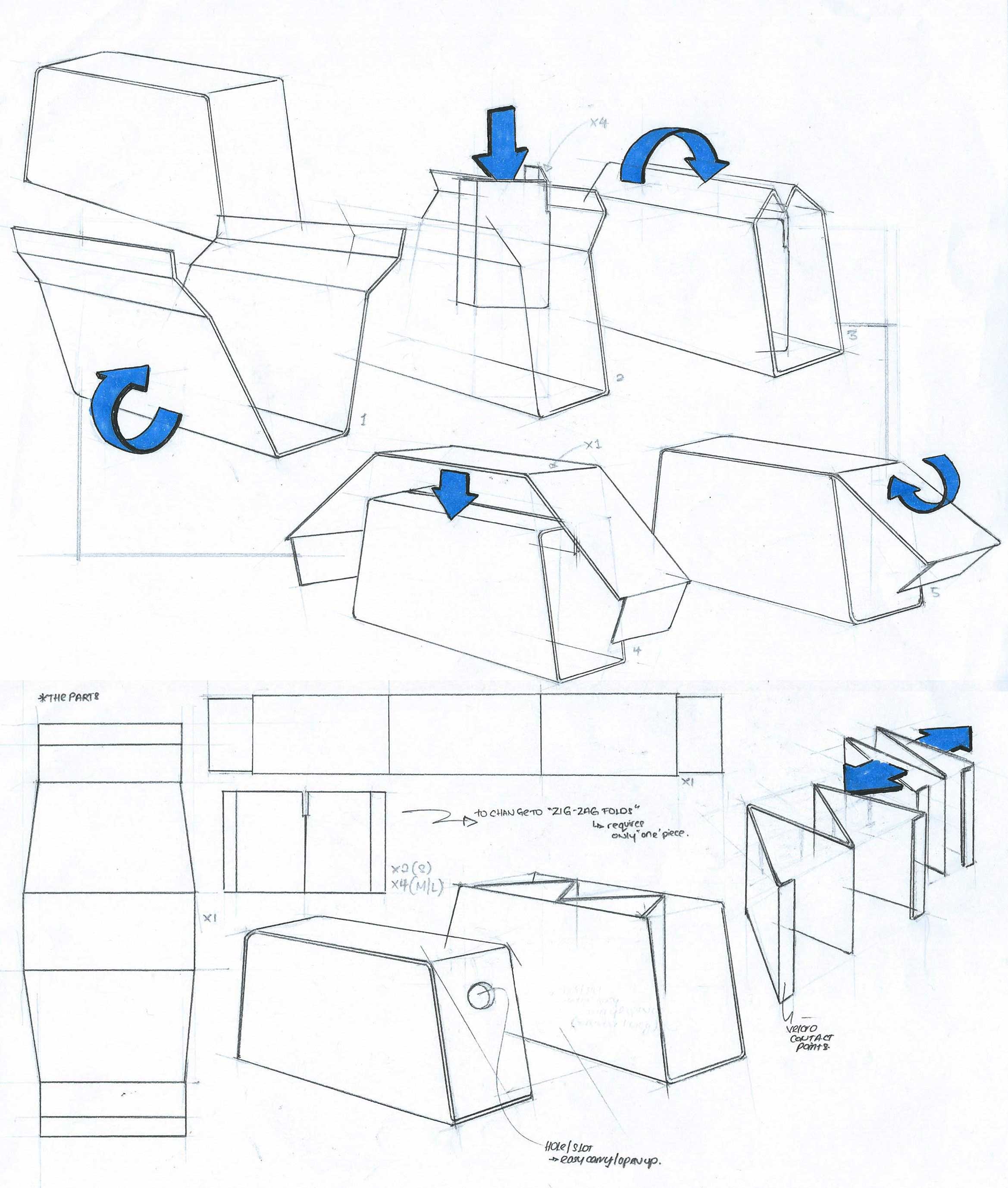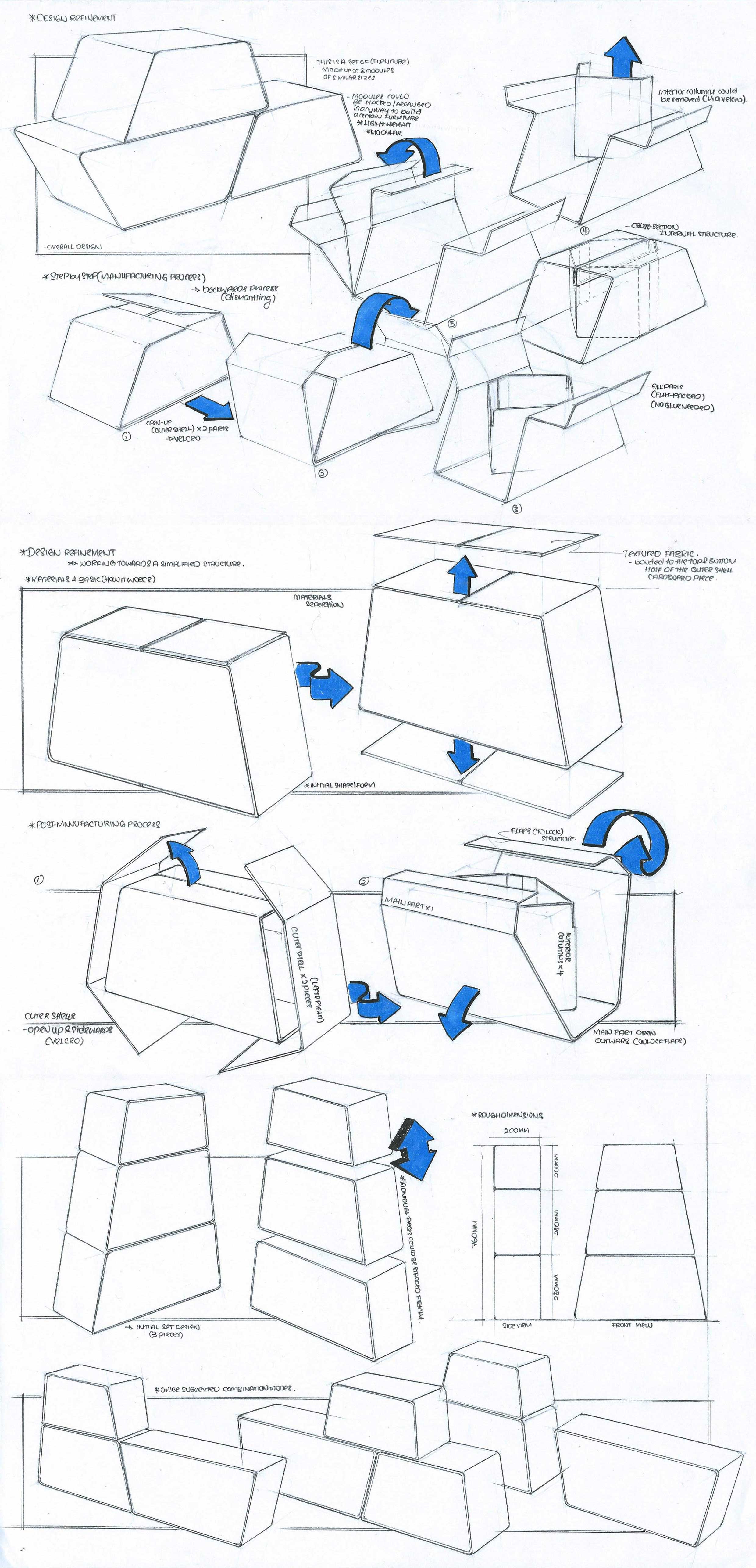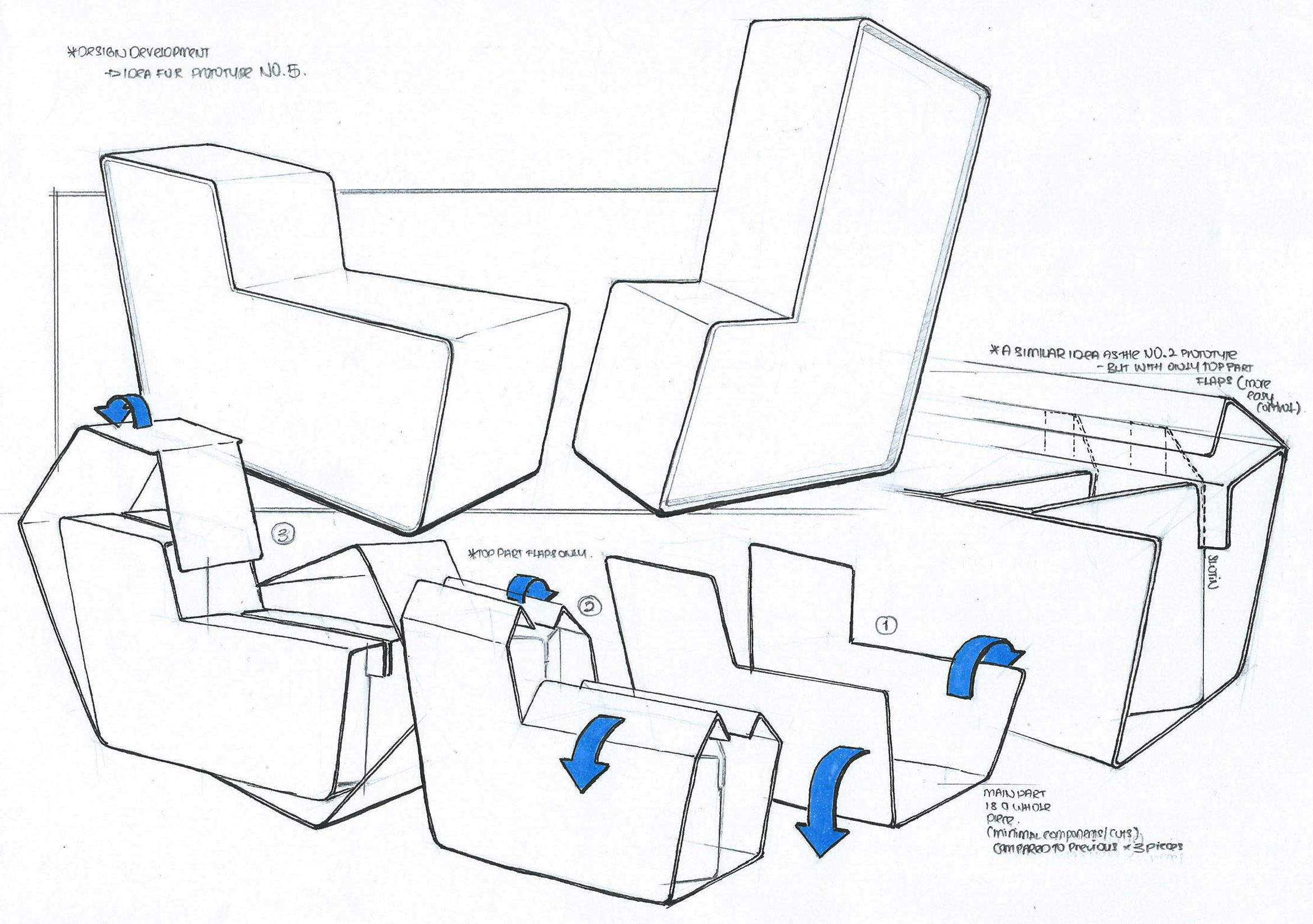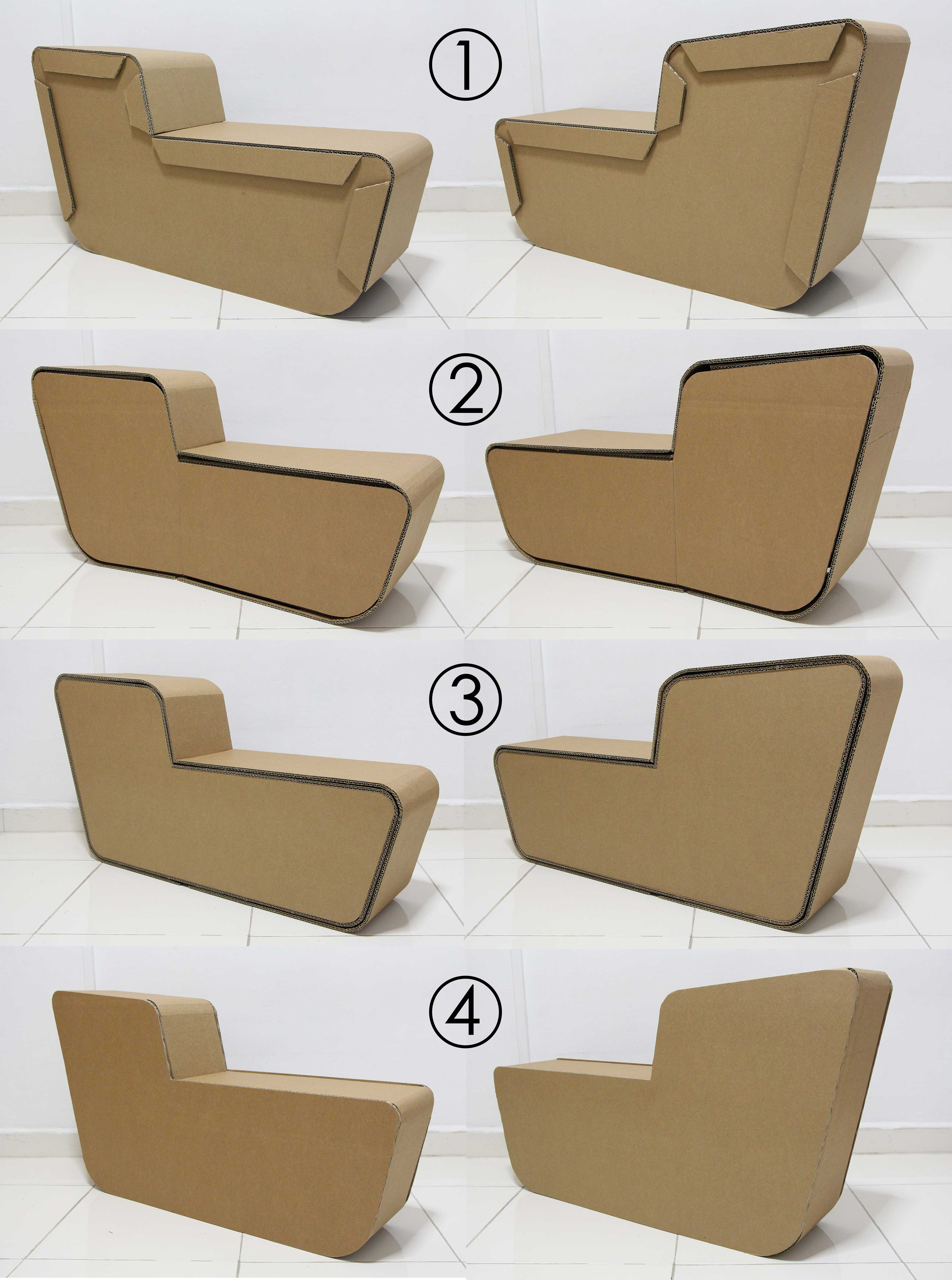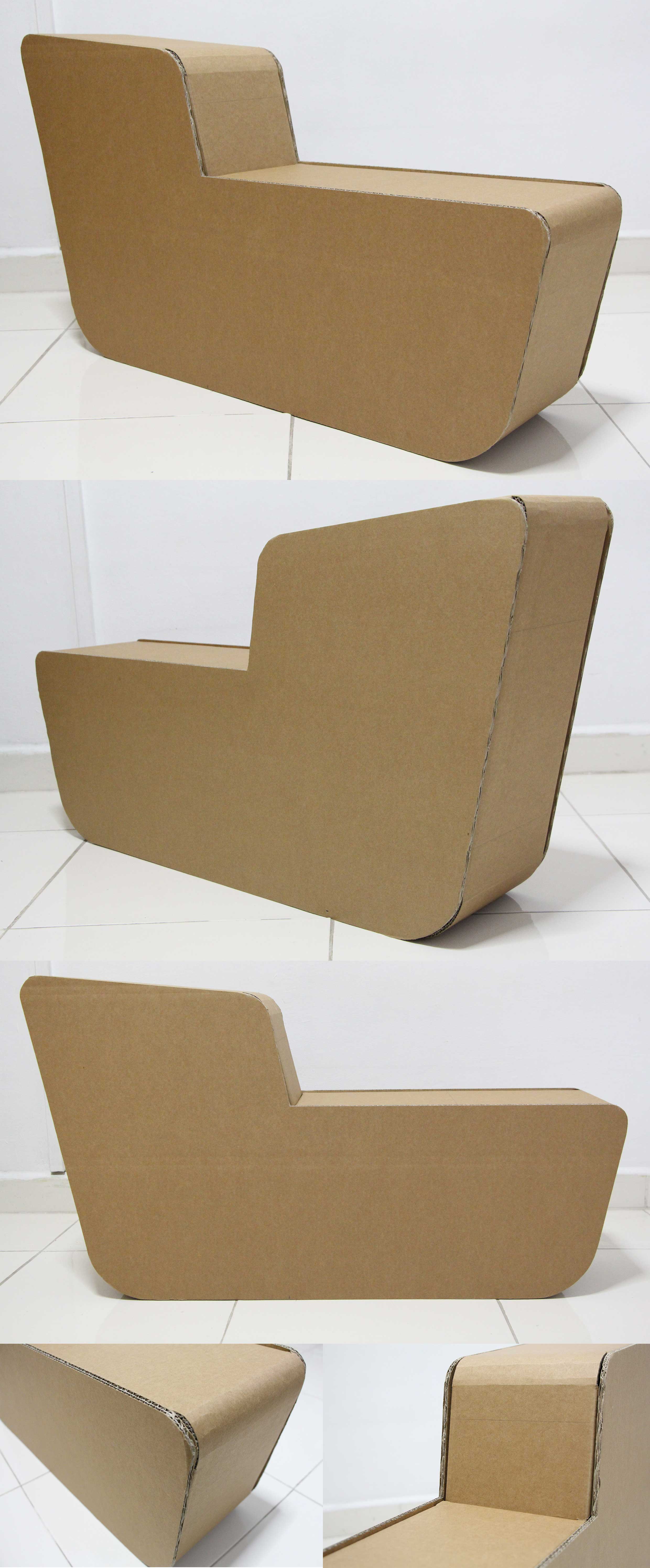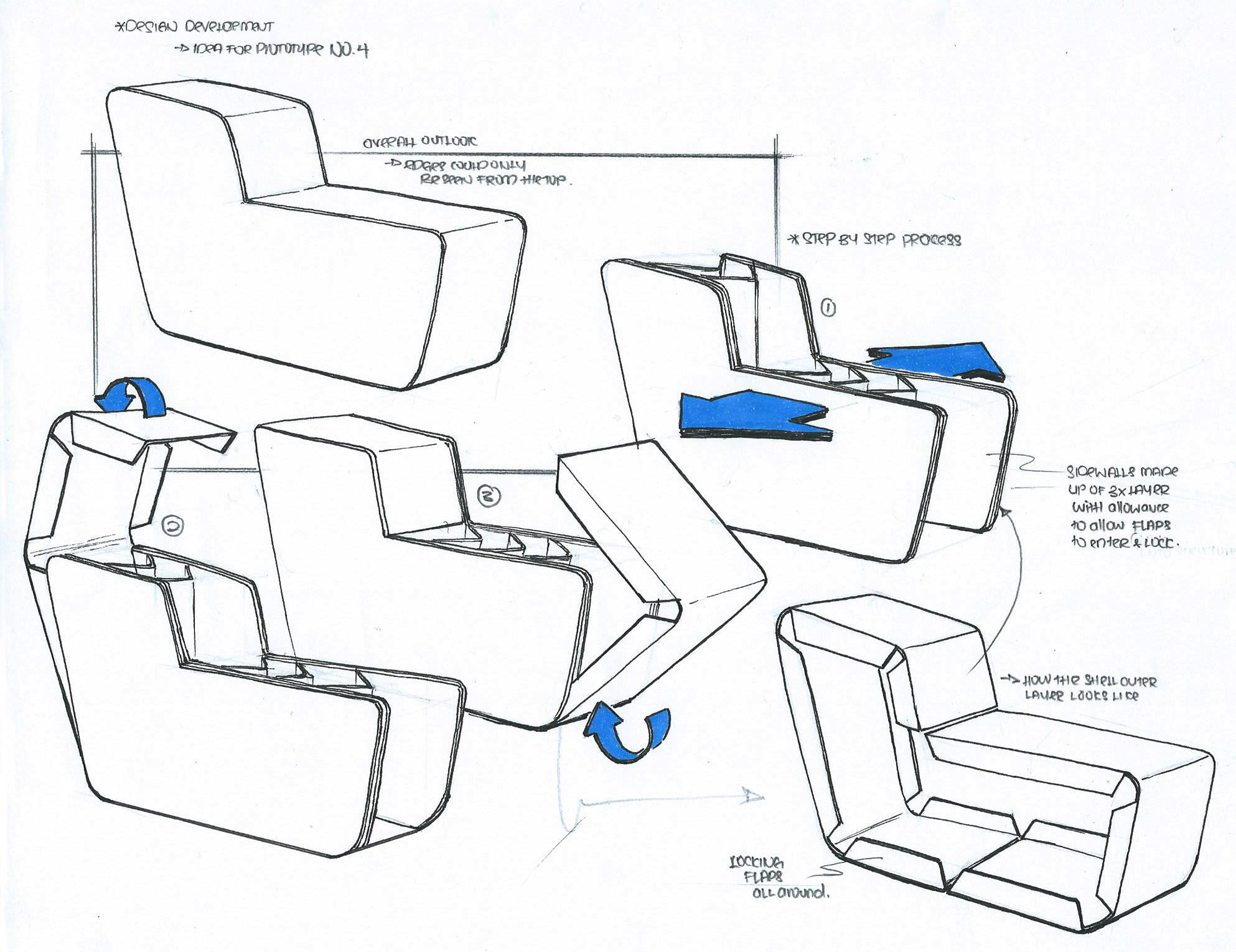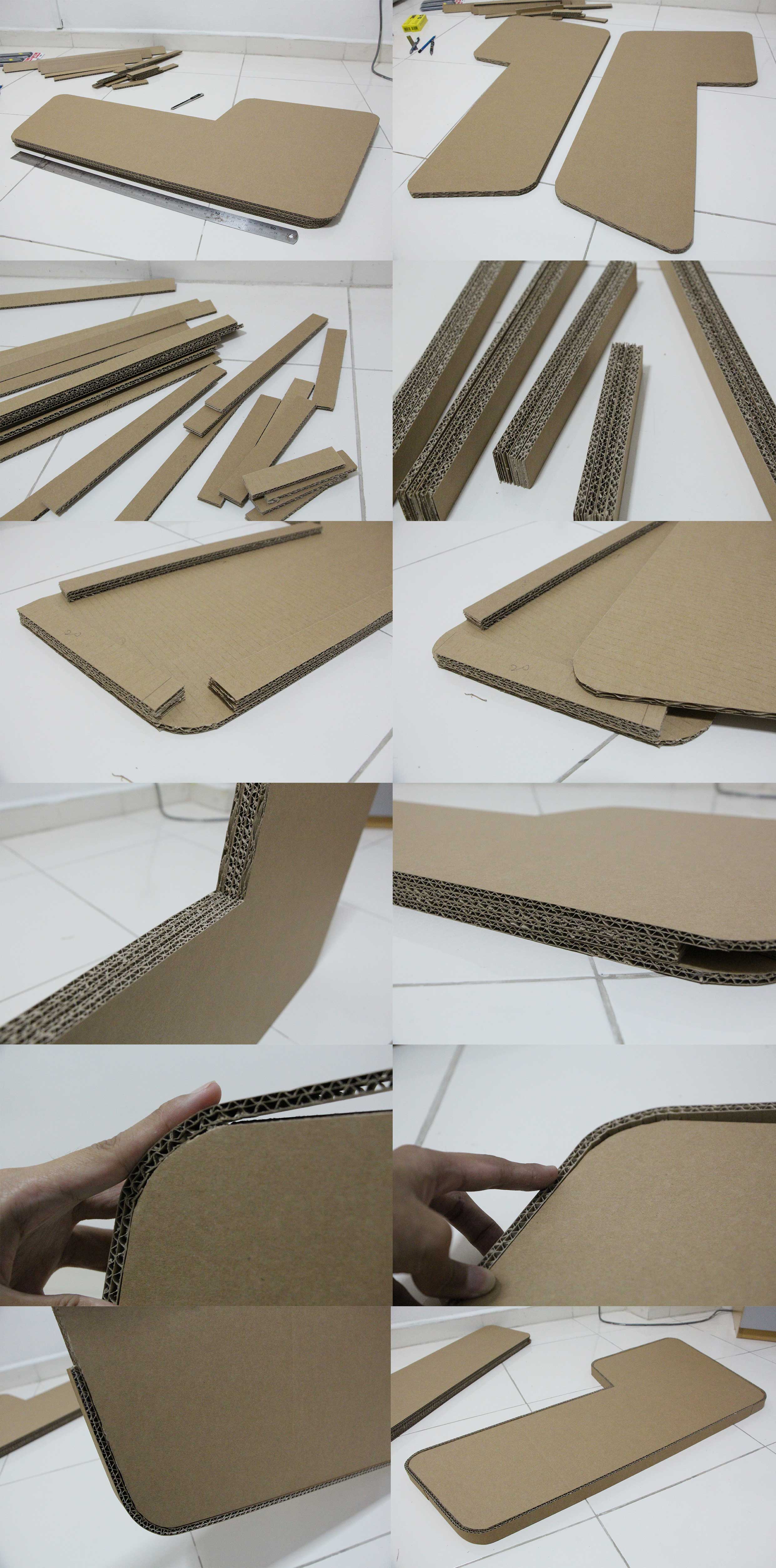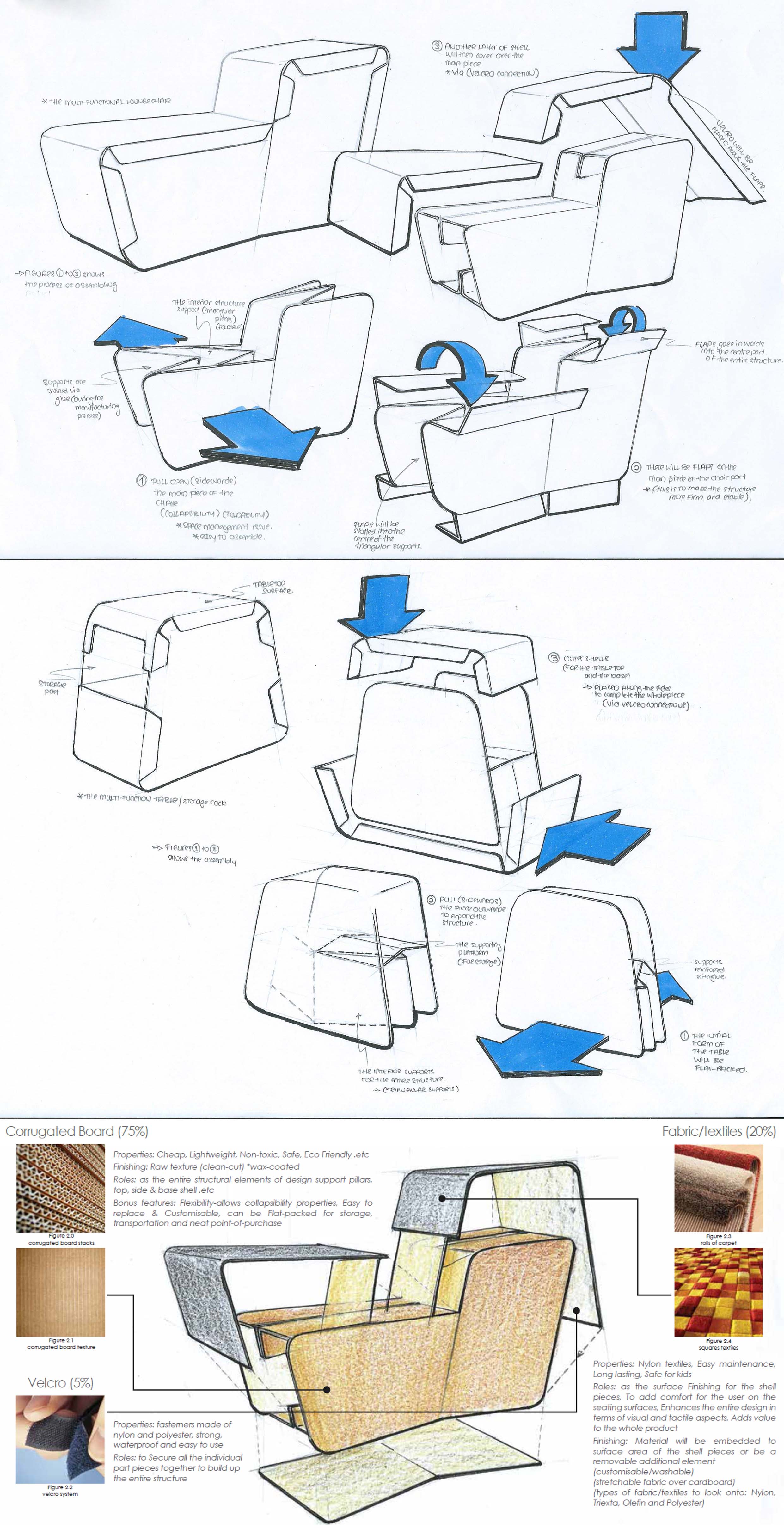I have made a prototype shell of the design with the top-curved edges.
Upon first impression, it looks unbalance. This is in terms of the continuity of the form from straight cut to curvy edges. In conclusion, I will still go with the straight edge design. This is because,
In conclusion, I will still go with the straight edge design. This is because,
– structure allows as much interior support to be spread (the curved edge actually disallows proper structuring that led to weak points) this was tested on the previous mock-ups although it may look more pleasant.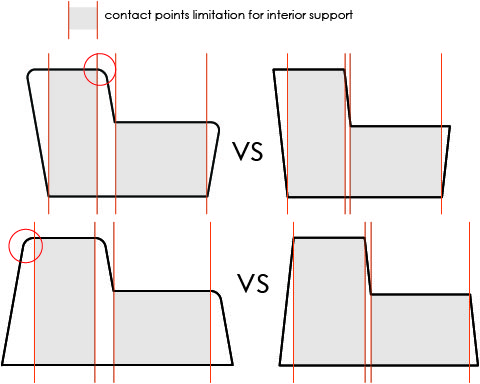
– balancing aesthetic with product functionality and durability
– product is to allow ruggedness, as from personal findings while testing my first prototype I was lucky to have an obedient user. Pre-school kids can be playful at times. The question now is what if my product gets thrown around? Will it still last? the more rigid the corners are, the stronger the structure is.![s [Converted]](../../../../wp-content/uploads/sites/138/2016/02/s-Converted.jpg)
– the other thing is that, form the start i wanted to do something modular like puzzle and bricks. As tested, it is easier to make mudularity of this product with most straight corners. This is to the extent of my material which is cardboard unlike other organic material like wood.
Category Archives: FYP PD / FG / 2015-16
Full Scale Sixth Prototype
These are images of the sixth prototype.
This is similar to the 5th assembly idea with the modular concept but an adjustment was made to the interior section. From V support to Zig Zag support. This reduces the number of parts and thus reduce manufacturing costs.
From the previous no.5 prototype the side flaps goes in without any slot in the interior section to double secure but in this prototype 6 a small 5mm slit is made on the bottom ends of the zig zag interior flaps to allow the side outer flaps to slot and lock in place.
The entire form is reduced in size to make it more tight/stiff and firm.
Elimination of rounded edges allows easier and neater folds, thus also allows modularity in structure. Any forms of modules with the similar shapes and angel tilt could fit on or at the sides upon each other like a set of modules.
This should be the idea and method that i would be moving on from with the other set designs

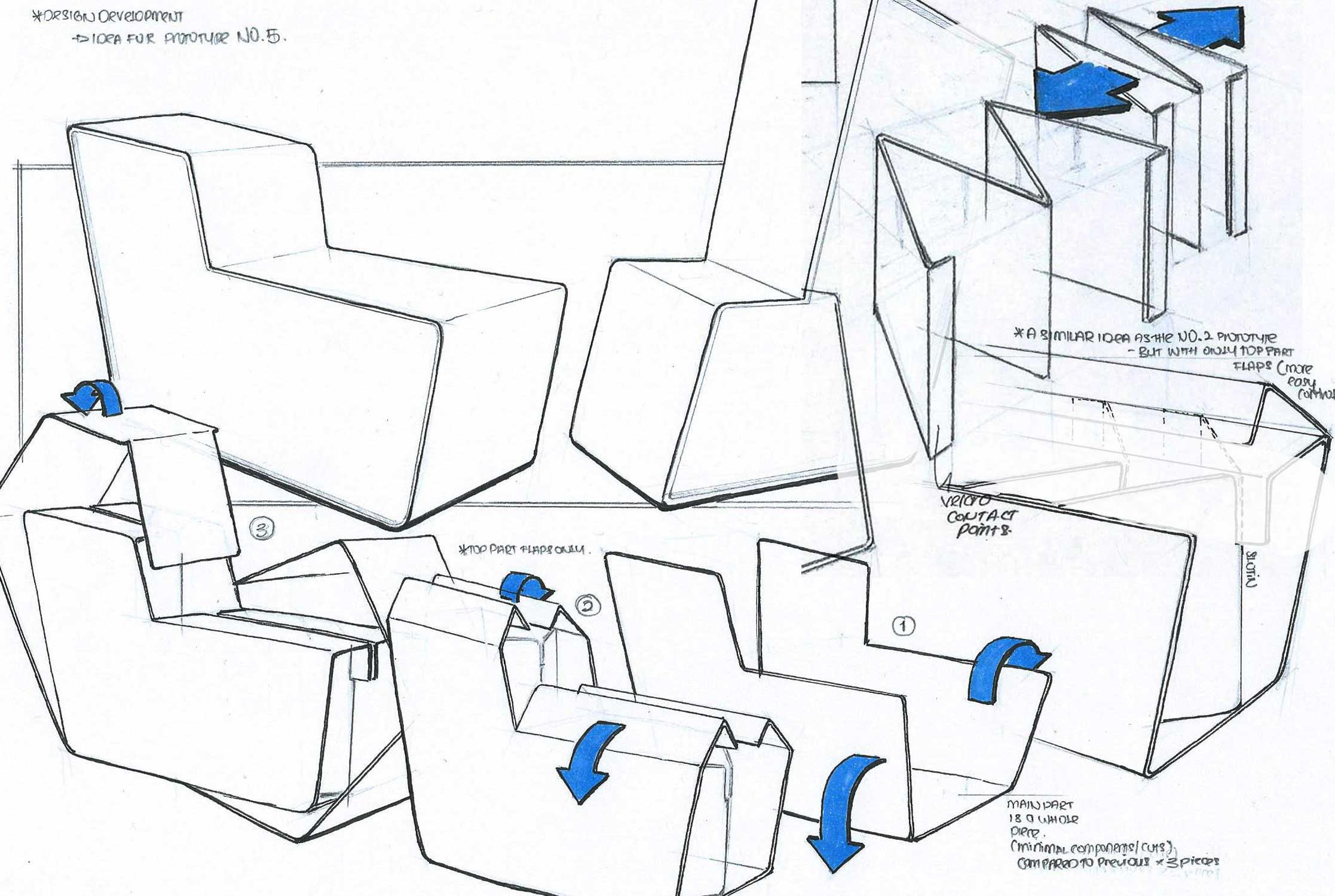
Design Development & Fifth Prototype
From the previous versions of experimentation that i have made, I have made some conclusions and decisions.
These are based on the points and outcomes of the product which involves the amount of material used, the various types of materials used, the amount of time and effort took to make a single module, the number of pre-cut parts and pieces, the bonding methods used, also the strength of the final outcome, the ease of manufacturing and also pre-fixing on the consumer end.
I have move on to construct some more ideas.
I settled on this modular design idea that brings back to the idea of stack-ability, easy shapes, the game of tetris and also the concept of building blocks.
I came out with a design that can be constructed out of pre-folded cardboard planes with a few cuts and slots and abit of velcro connection (for easy disassembly for storage) (on the textile part that is interchangeable) but without the use of any glue or tapes.
Thus, as discussed :
this will ease manufacturers to produce the moulds for the standard part pieces.
this would also reduce manufacturing time and cost with the elimination of glued parts or layering.
but overall, it may look as an easy design as all the complications are hidden in the design and the hard work are already being made during the manufacturing process.
to an extent it is agreeable that the simpler the form, the easier the making process would be and also the more innovative possibility it creates for us. For example a cuboid is simpler than an organic sphere but it has characteristics of a planer surface area that allows stackability.
This idea is still similar to the furniture set, It is still a furniture set.
Just that the form does not restrict it to a particular function.
The method of making will be as easy as keeping a book in a bag and zip it up.
No glue will be involve.
All parts can be constructed out of a sheet of cardboard. (size depends)
There will still be 3-5 modules in the furniture set.
These modules can be stack of join together for a particular function.
These modules can be disassembled and collapsed when not in use for easy storage.
These modules will have fabric/textile on some of its outer surface parts.
Light weight is a factor look upon for kids easy mobility.
The design comprises of 3 modules.
Each of which are of different sizes. (small, medium, large)
Modules can be stacked upon each other to built a tower. (like building blocks)
Modules can be mix and match. (like tetris)
*modules as its own is actually a kids chair and table, but when place together it can be a combo lounge with side table like my design for prototypes 1 to 4.
Therefore, modules are not labelled as a chair or table. Its form is universal… to a certain extent though.
These are photos of comparison between the initial design from prototype 3 with prototype 5 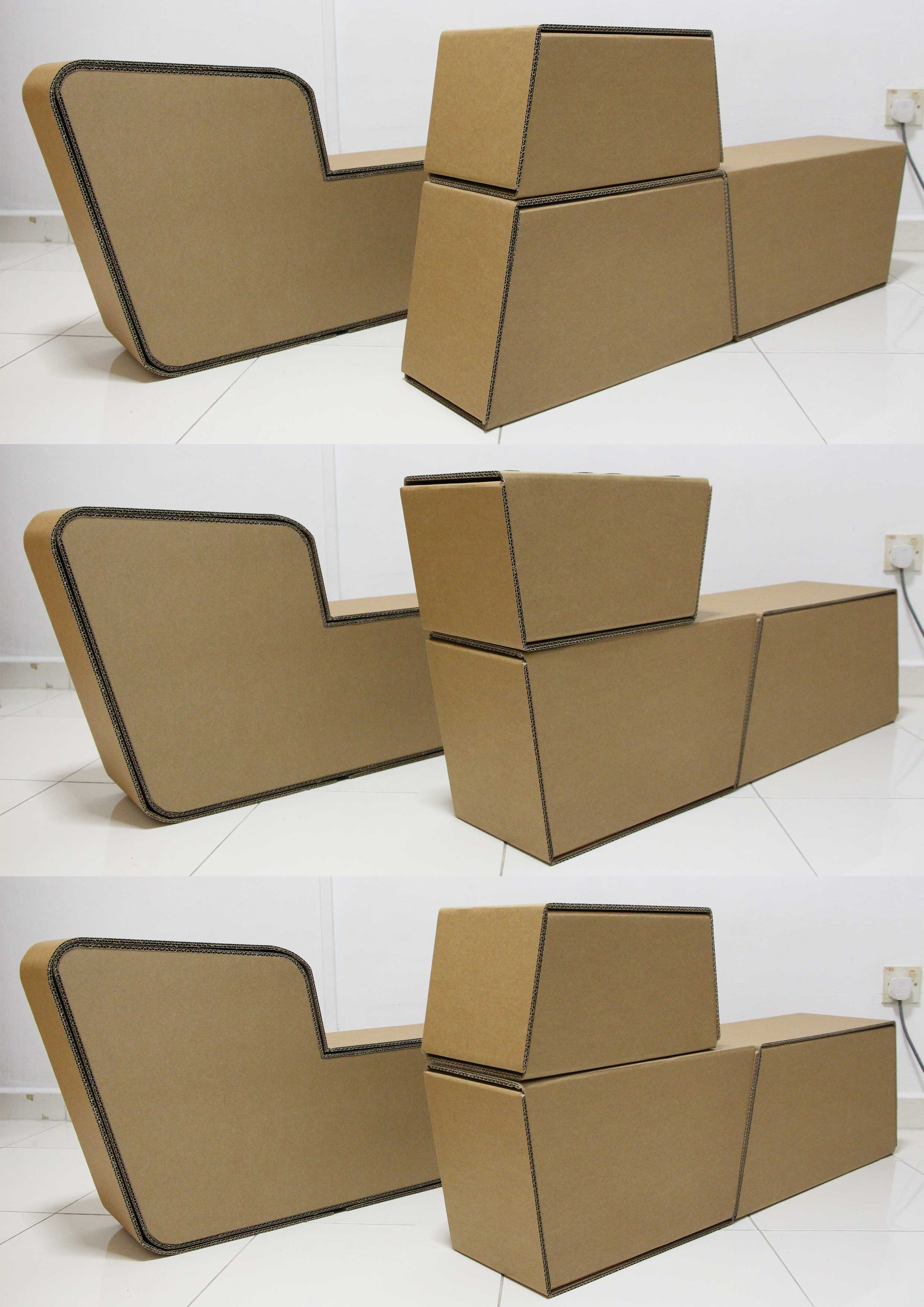
Prototype 3 (initial design)

The various combinations

I have various versions of this idea.
Below are two of these ideas.
Prototype Comparison (methodologies, visuals & other aspects)
These images shows photographs of the different prototypes which i have made from 1 to 4.
Prototypes were constructed individually based on the design considerations made and the aspects of further improvement form its previous versions.
All prototypes are of full scale.
All prototypes are collapsible.
The description below are only brief observations.
*reference back to previous posts of photographic documentation is advised for recollection.
FIRST PROTOTYPE:
Made as a benchmark to examine structural strength, overall form, functionality, manufacturing possibilities and also user friendliness.
The first use of velcro connections as a unique way of joining the parts together.
The use of exterior flaps to secure the overall form.
The use of cuts instead of folds.
VELCRO & GLUE
–
The exterior flaps are a visual distraction to the continuous outline of the form. (rigid and exposed edges)
The structure lack base support can covering.
More interior structural element could be added to improve the strength.
The width is too wide (based on initial product testing)
SECOND PROTOTYPE:
Made as an improvement step from the previous one.
Overall structure made tapered in the center part to reduce width for better ergonomics. (as discussed after initial product testing)
The use of interior flaps that locks. (top and bottom only)
The elimination of exterior flaps to enhance side profile.
The construction of a full outer shell perimeter covering. (leaves no exposed parts)
VELCRO, GLUE, INTERIOR LOCKING FLAPS
–
Structure looks elegant.
Overall strength improves.
Too many components.
Abit more of pre-manufacturing work to be done.
Construction of the full length shell covering is tedious with the inconsistent widths. (due to the taper)
Internal flaps allow gaps to be seen between the shell an the main body.
THIRD PROTOTYPE:
Made to improve both strength and finishing.
Design had a size reduction on width. (270mm to 200mm)
No tapering involve.
Main part constructed with layers of cardboard planes to add thickness as surface area for the velcro to fit all over the perimeter
No flaps were involve in this design.
Abit more interior triangular planes were added.
VELCRO, GLUE, BASIC GUIDING SLOT
–
Overall strength improves more.
Still too many components.
Still abit more of pre-manufacturing work to be done but easier than the 2nd one.
Structure looks more balance with the consistent width.
Side profile shows the raw corrugated aspect of cardboard.
FORTH PROTOTYPE:
Made as an alternative method to the 3rd prototype.
The elimination of velcro connection.
Main structure made of several cut planes glued together to give strength and thickness as well as space for the
interlocking flaps to go through.
GLUE, BASIC GUIDING SLOT, INTERIOR LOCKING FLAPS
–
Strength similar to 3rd one.
Raw corrugated aspect of cardboard could only be seen from the top and bottom side faces.
A much more cleaner design.
These are the Sketches of the different ideas of manufacturing for Prototypes 1 to 4.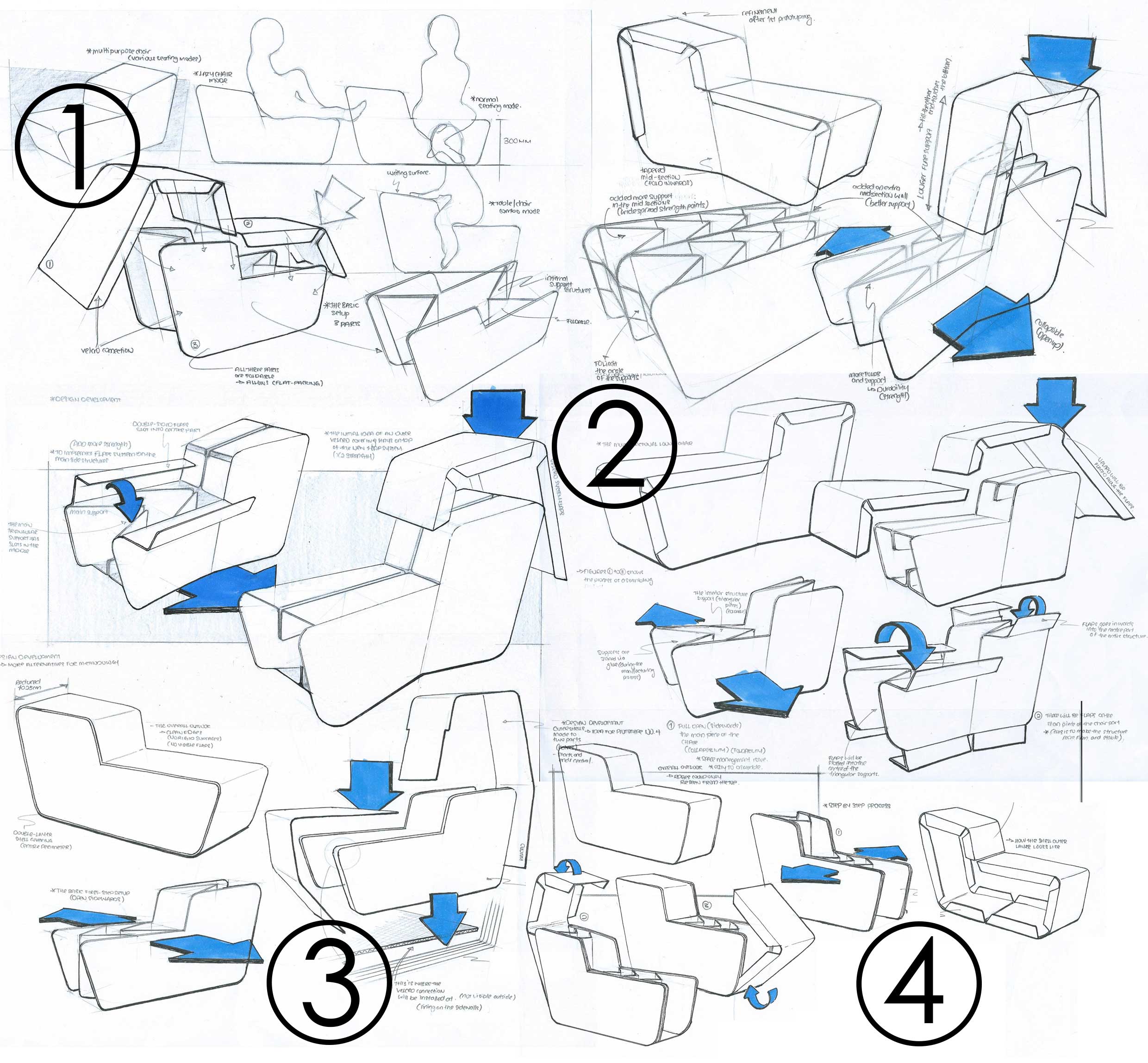
These are the visual comparisons of Prototype 1 and 3 when the textiles are involved with the design.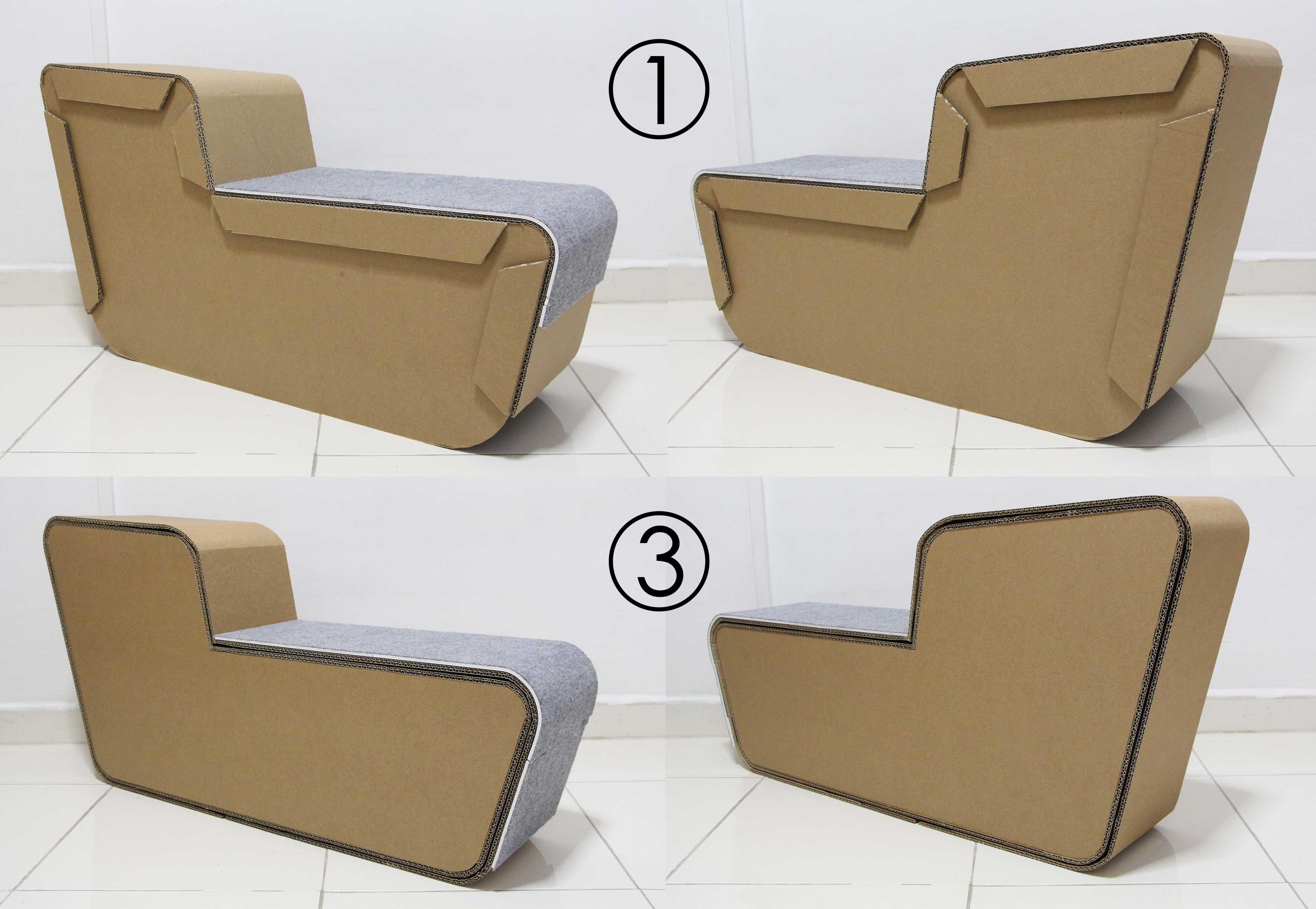 From the results and the experimentation that i have done, it is possible that i might not go on with this design but instead I will similar, better design with a combinations of all the aspects of design and manufacturing listed above.
From the results and the experimentation that i have done, it is possible that i might not go on with this design but instead I will similar, better design with a combinations of all the aspects of design and manufacturing listed above.
“Building blocks, Tetris, Easy shapes, Pre school kids (growth development stages)
Parent and child bonding/interaction, Using of mix materials (fabric of textiles to add character to design)”
Characteristics of collapsibility, Stackable, Light-weight Eco, flat packed, DIY, user friendly etc. as discussed will stay in the next design refinements.
Full Scale Forth Prototype
These are the process documentation of the forth prototype.
This method requires thick layering (x3) of the side walls on the main frame structure.
Reason for the layering is to allow adequate slot/space for the flaps of the shell pieces to *lock in.
This method is an effort to reduce the percentage of velcro used and also to hide most of the corrugated sides of the cardboard planes. (cleaner side profile)
More detail-lings can be seen on the photos below.
The Forth Prototype (in the making)
I went straight to plan and do another prototype which will not require the use of velco connections.
This prototype will not show any edge corrugated lines from the sides.
This is to test the possibility of using the folds that are commonly seen on cardboard cartons as discussed in the earlier meetings.
I am still in the process of making this possible. More information will be uploaded when it is done.
I will also do a video documentation of these prototypes (assembly/disassembly) soon and get the links uploaded here.
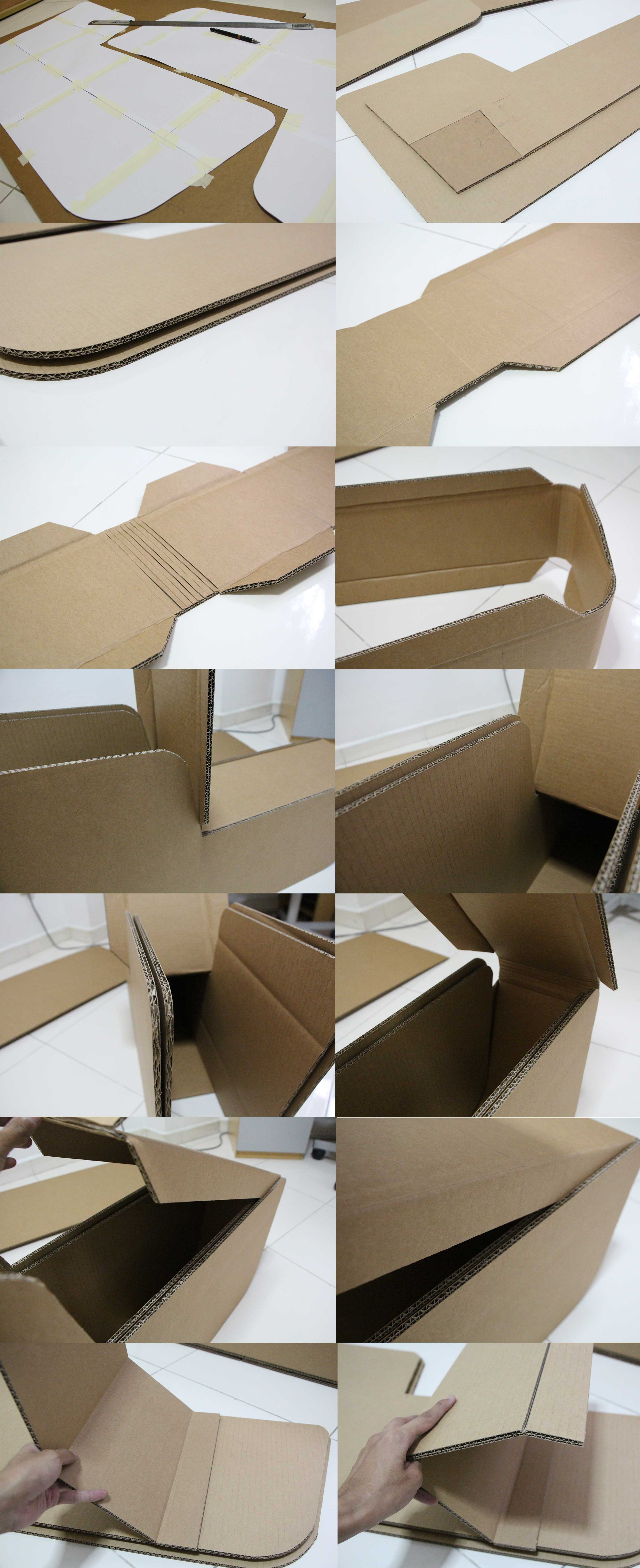
Full Scale Third Prototype
I have finally finished my third full scale prototype and in the process of making my forth one.
For this experimentation, i also play with the use of textiles.
This prototype is based on the recent sketch that i have posted.
I decided to not do the tapered concept like the 2nd prototype but instead stick with a constant comfortable thickness for the entire structure. This way allows me to do a better and stronger structure.
Outcomes:
The making process requires abit of work as the lining for the velcro strip is a little challenging.
I believe this prototype is as strong as the 2nd one and much stronger than the first one but also much more strudy than both of the previous models.
I really like how the clean cut lines are formed on the perimeter of the structure witn no visible rigid elements but still there is this gap in between from the velcro strips which cannot be avoided.
More supports are added to this prototype.
I bought a puzzle-join textile mats and modified them to go with my design.
Using fabric double sided tape, i bonded them with only the top part of the seating area along with a bit of side wall.
In the future, I might have to use another kind of adhesive to replace the double sided tape for better material bonding.
I am very much satisfied with the usage of the textile with the cardboard prototype as it makes the entire design look neutral and elegant but yet simple.
Futhermore the textile will help in hiding the creases of the cardboard from showing up in the future.
New methods for tests part1 (sketches and prototyping process)
I evaluated the previous methods and fine sketch two new ideas which I will experiment.
I am still in the process of building my third prototype with a new method that will solve the issue of rigid flaps and complicated internal structures.
The newest method that I came out with will not require and form of Velcro but only slots and joints which I will only post when I have more materials to build.
The second prototype (process and outcomes)
This is the documentation of the process for my 2nd prototype testing with another method.
This is with the considerations of the design refinements made after the initial test model.
Honestly, this is a much more complex method. The overall outlook of the prototype may seem clean and simple but the internal parts and the fixing technique is not as friendly as the initial method. The double flaps on the top and bottom are hard to control. When slotting in the bottom parts the top seems to be flapping around and hard to hold them together. Other issues includes the contouring of the sides which do not gel or gives a consistent flow.
Above that, this structure seems to be a little bit stronger as it has double layer outer shelling surface and more interior support.
A solution for a newer method is still underway.

